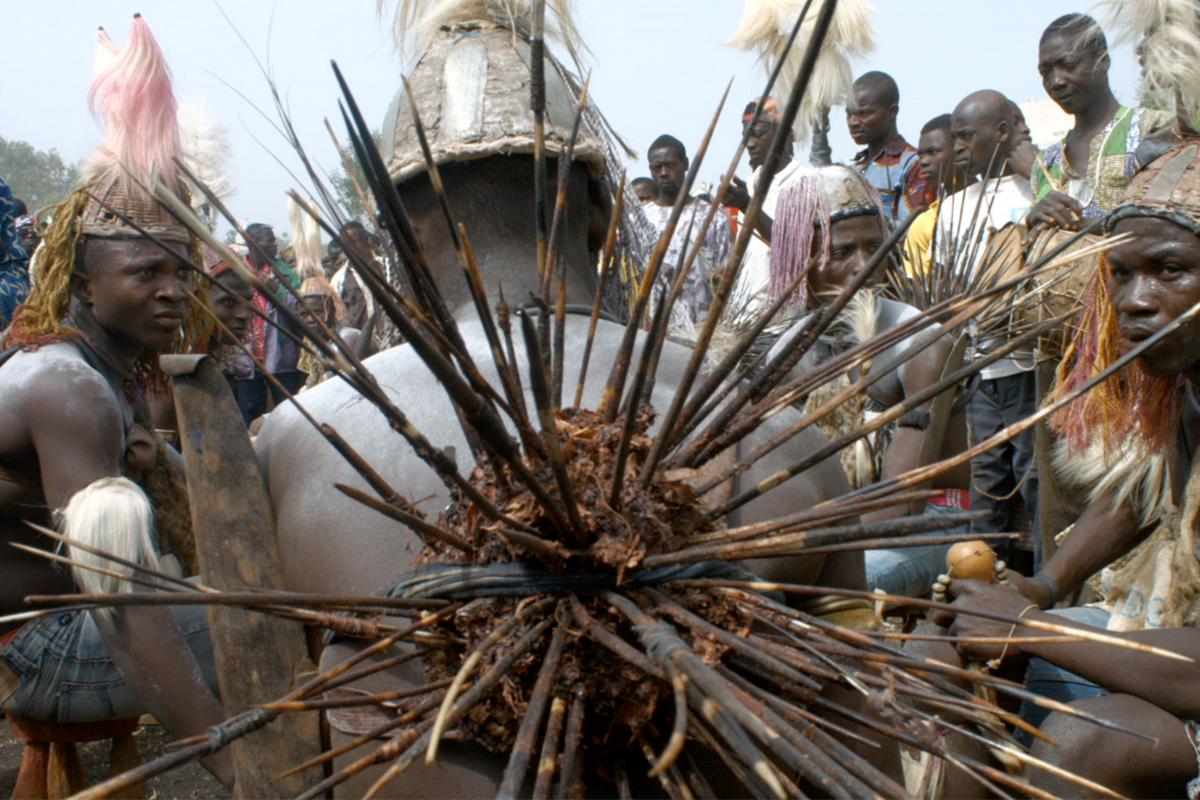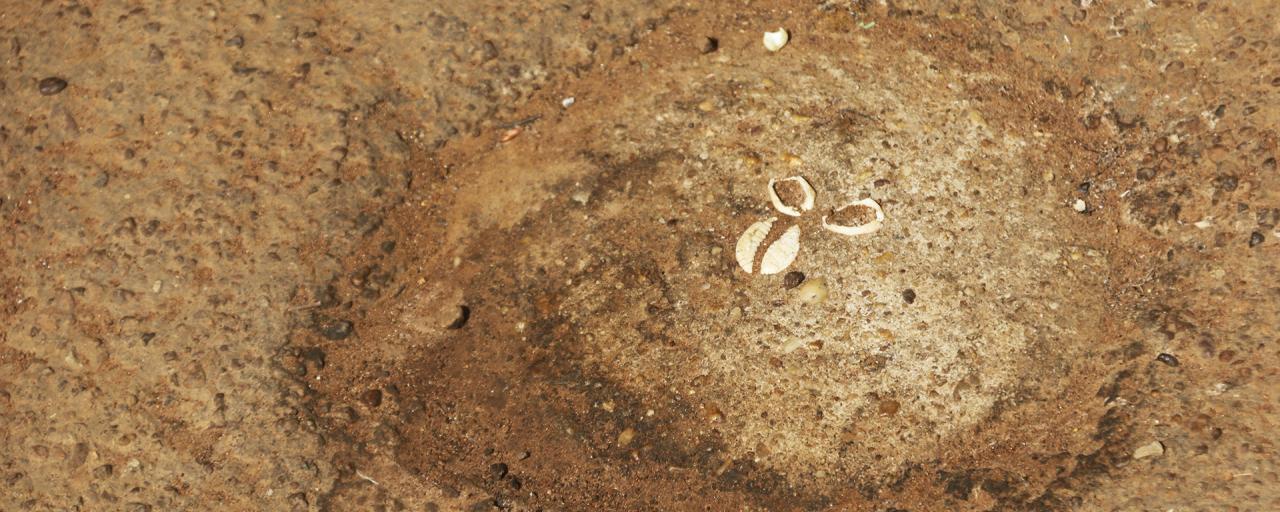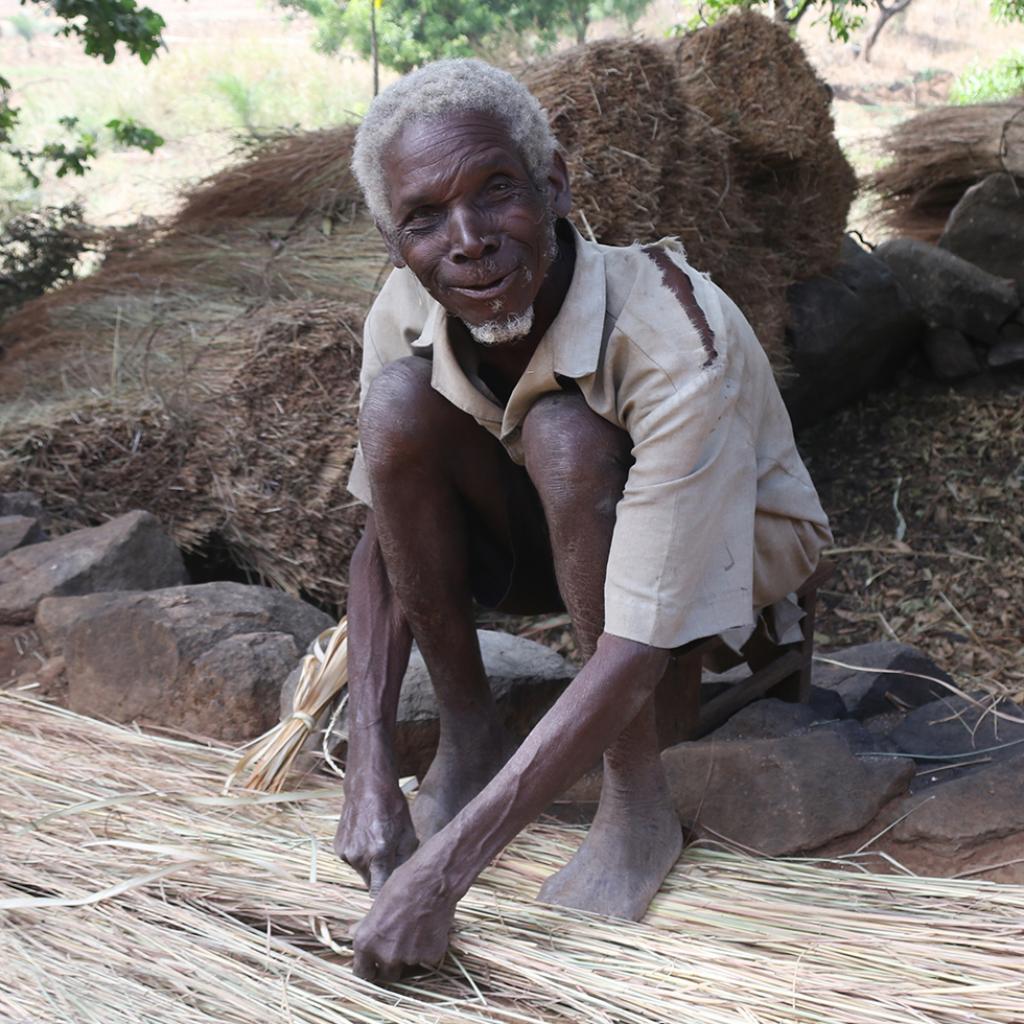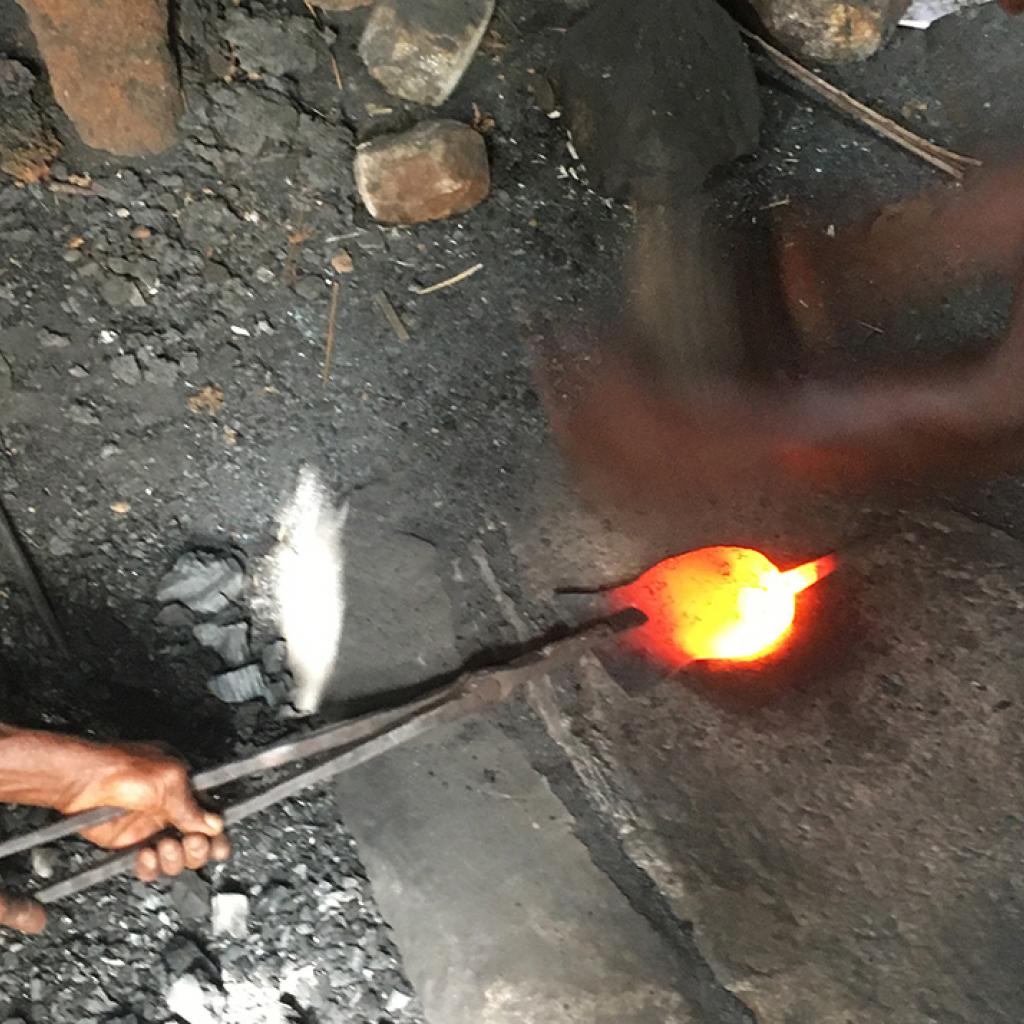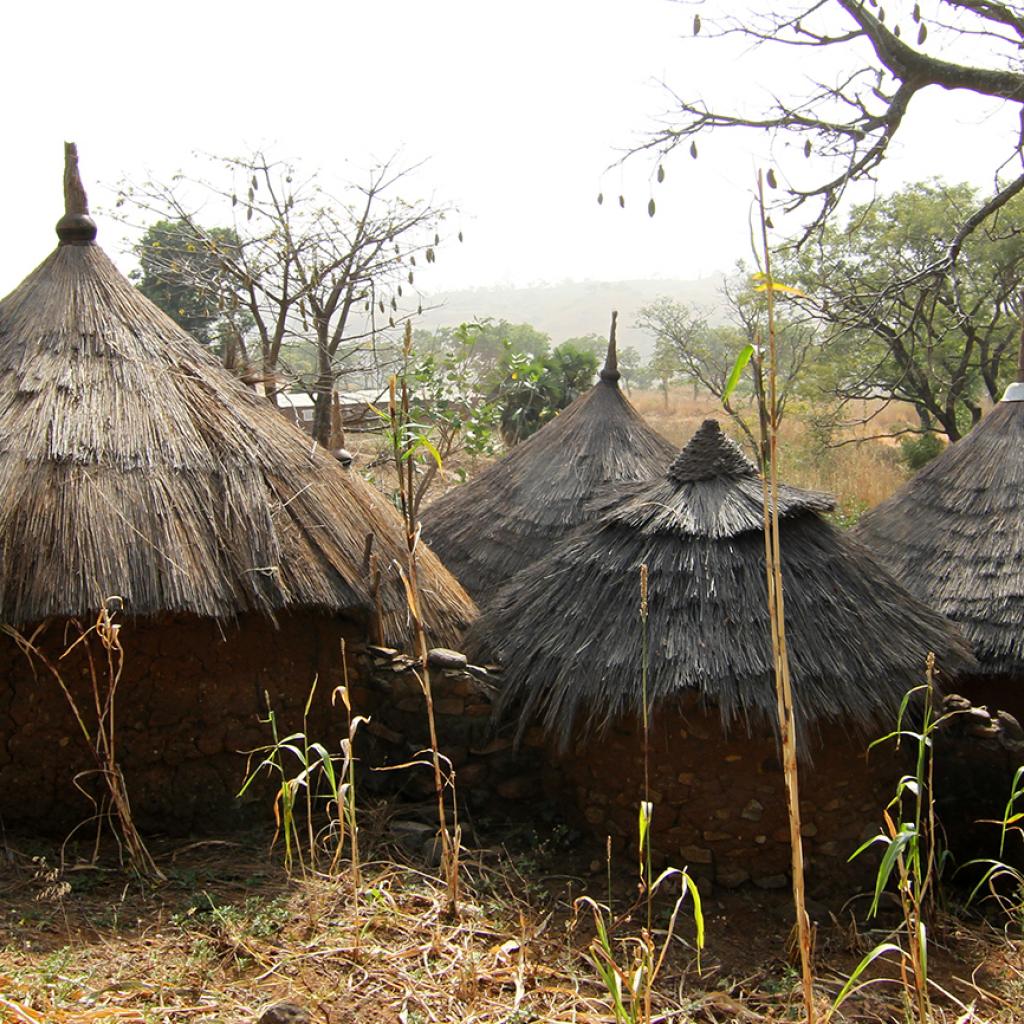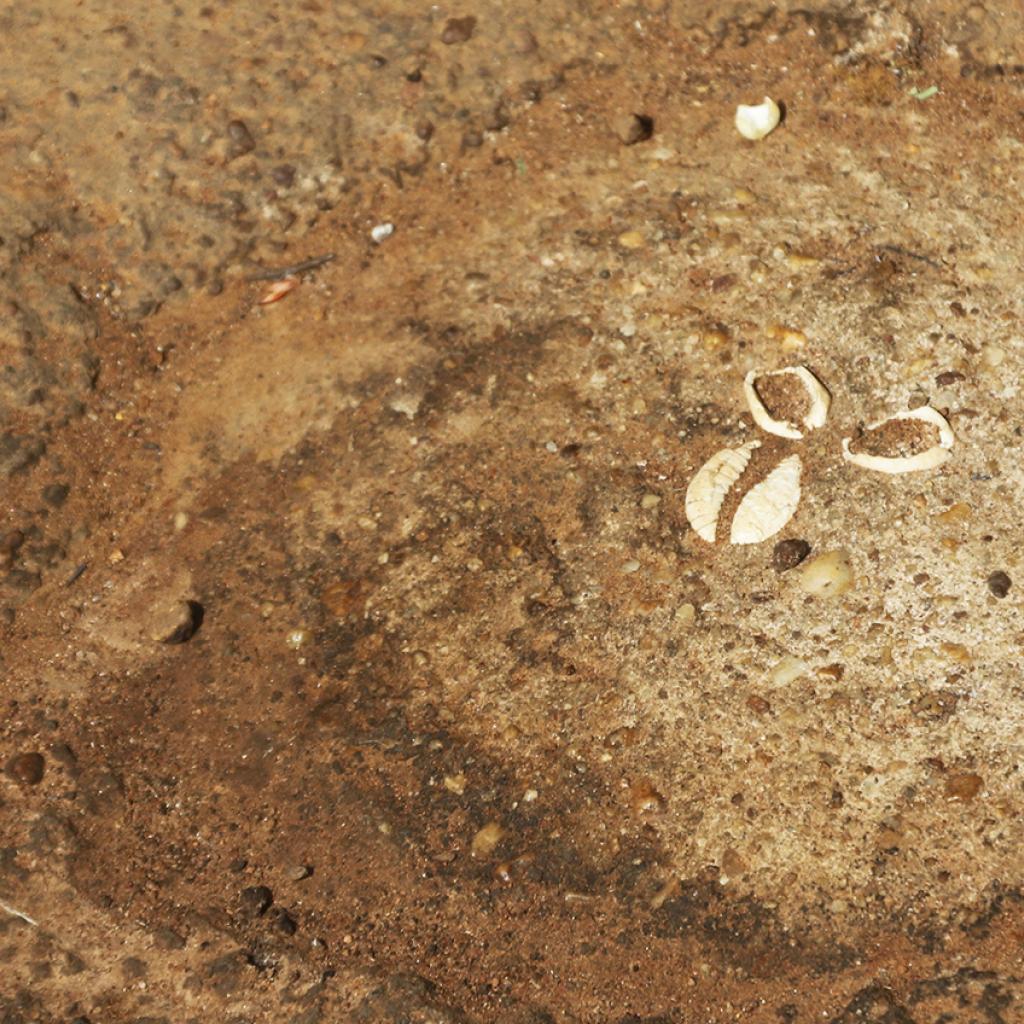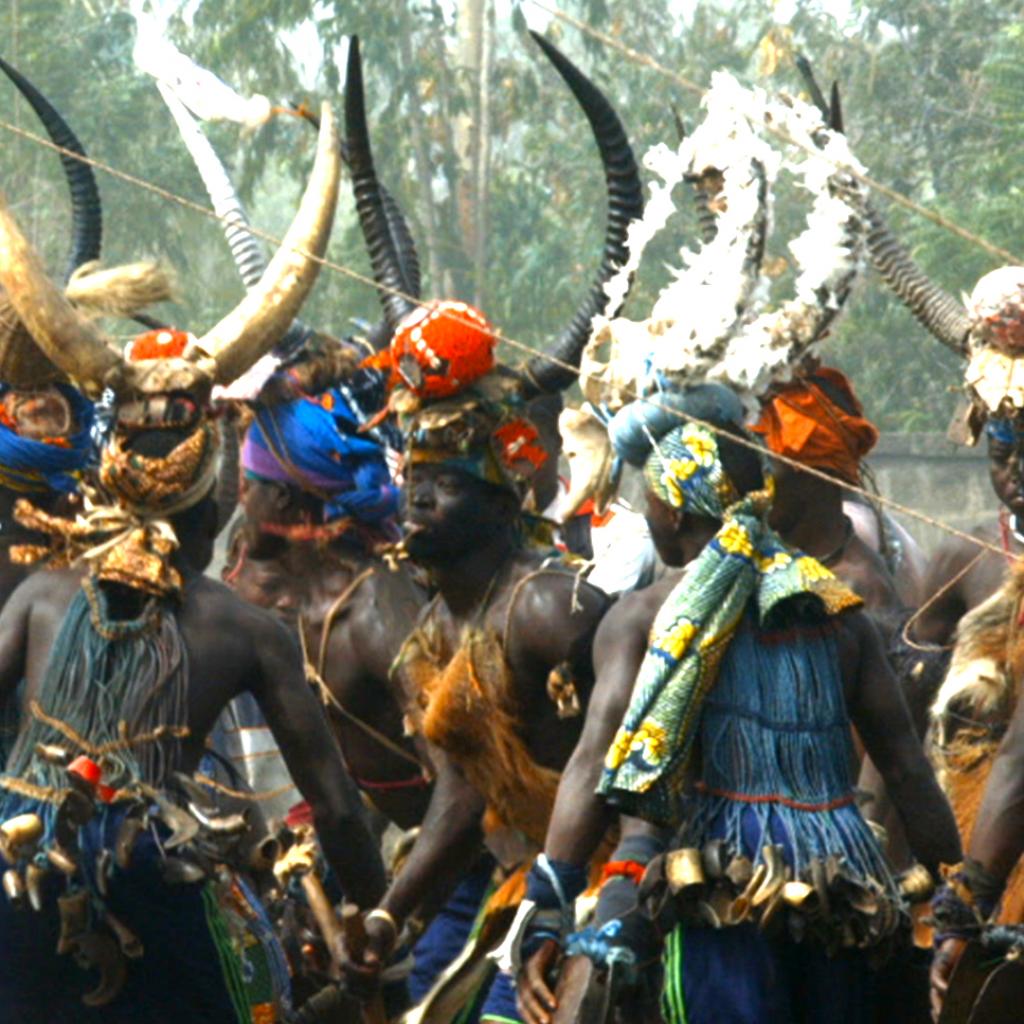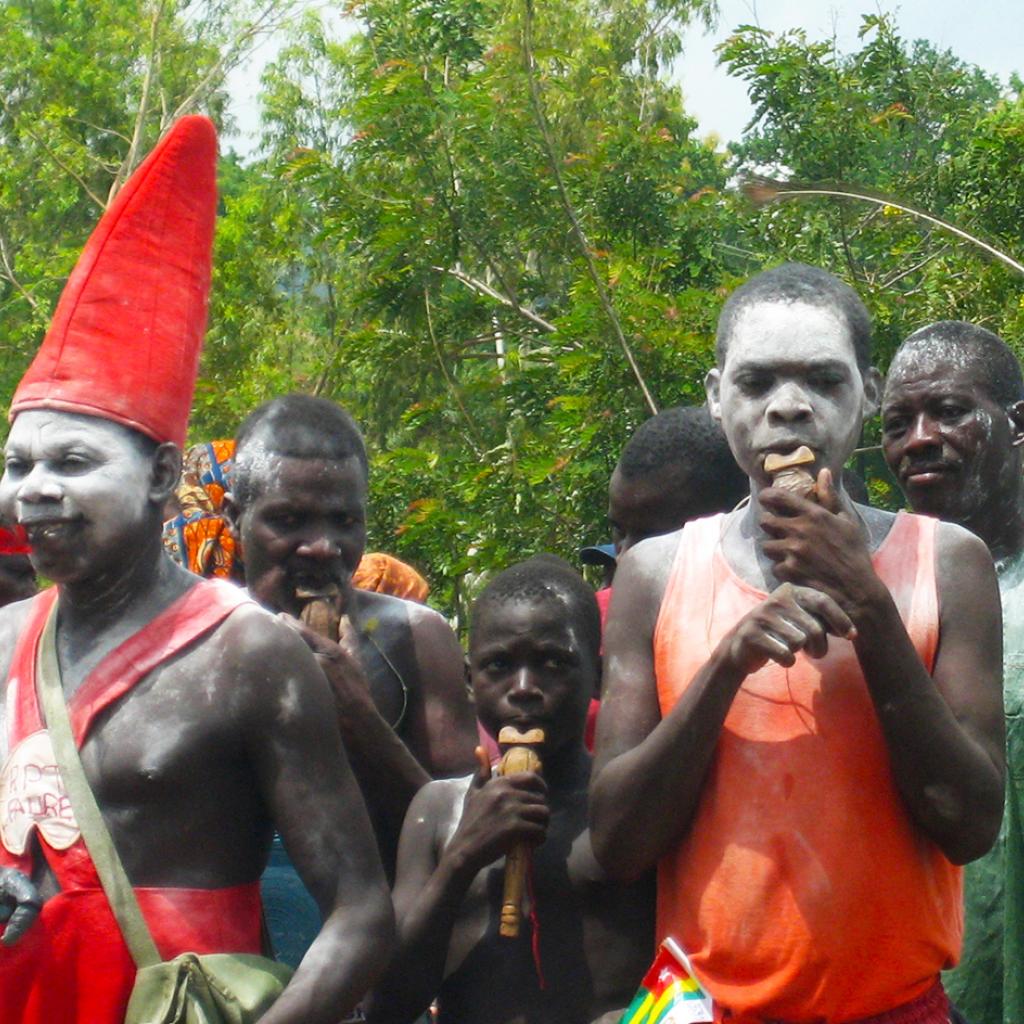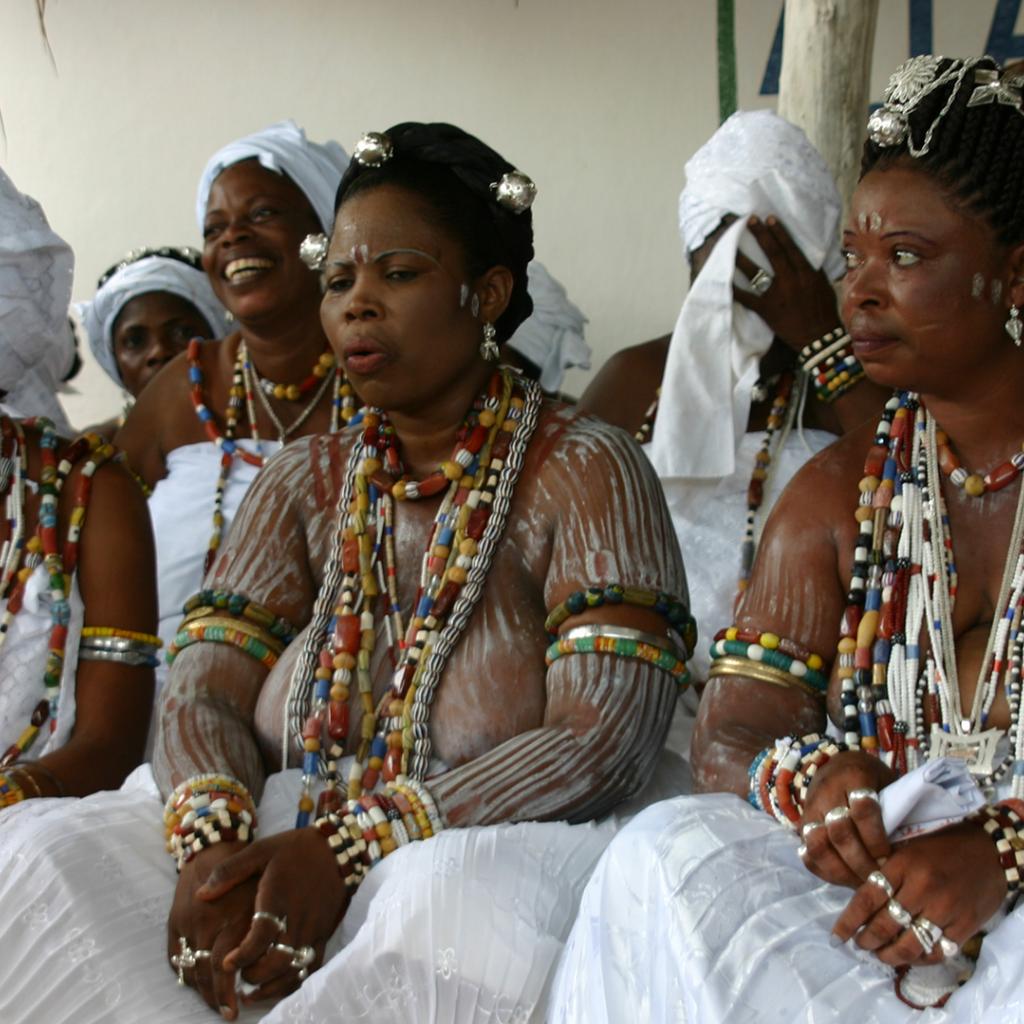The Kabyè are a population that guards and practices ancient traditions and celebrates religious and initiation rites like centuries ago.
The Kabyé believe in a supreme being called Eso, it is the god that creates and to whom all the earth belongs, and all that is on it; he is the father of all men.
Eso gave order to the world with his word, to the first man Esotisa, that means "messenger of god", was given the task of making known all the rules that the divinity has created, with the aim of regulating the relationship between individuals and to govern society.
The administrators of these rules are the Coco priests, who descend from the first man, and represent the god on earth; the transgression of these rules compromises the social balance and the transmission of life (fertility-fruitfulness).
Because of its immensity, Eso is impenetrable and mysterious to those who do not have the gift of prophecy and divination, but nevertheless does not cease to act and be present among men.
That of the Kabyè is a god who acts, directly or indirectly, that forgives and is also the one who punishes by striking with an epidemic, a drought and with infertility.
The Kabyè believe that Eso is present in holy places, the diweri, ie the "places of presence", these places are usually represented by the sanctuaries of the great ancestors, who had the gift of divination, and who now play the role of mediators between the man and the creator god.
These spirits, called Akoloma, as well as being mediators with God, are at the crossroads of the two worlds, human and divine, and guarantee communications from one to the other of the two worlds.
In the Kabyè beliefs an important role is played by the ancestors, who are respected and honored and to whom ceremonial offerings are addressed.
The ancestors, the Atetena, are literally "those who are in the grave", they look at men and are always present among them, death, in fact, concerns only the body, while the soul is immortal; death does not therefore mean the cessation of life, but only the passage from one mode of existence to another.
At the end of the funeral ritual and the realization of a sort of altar or a statue in the family home, the deceased takes his place in the lineage of his ancestors, and becomes a sort of protecting spirit, who ensures the transmission of life to the future generations.
The Kabyè recognize an important role for the ancestors also in the formation of society.
They are remembered as the previous owners of the land and are thanked annually for the contribution they have given to the development of agriculture in the area, the ancestors are also remembered for the work in the fields and a part of the crops is set aside for them and used as an offering and expression of gratitude.
A mourning ceremony always ends with a party, after the ceremony the relatives still alive can "greet" the dead and go on with their lives, this celebration is a farewell ceremony to the dead.
The Kabyè celebrate the first anniversary of the death of a deceased person, when he was over 80 when he died; this ceremony is called the "ghost cult" ceremony.
This ceremony is a big celebration, that can be very expensive, and only the richest families can afford it; at the ceremony the women participate bringing a bull's head on their head, usually they sacrifice the ox heads to the dead.
The oxes’ heads are left to dry in the air and are sometimes stored for later use, while some of the new sacrificed heads are taken by women as reward and cooked.
The Kabyè also pass on an ancestral legend about the creation of man.
According to mythology, the first Kabyè man would descend directly from the sky to the village of Lama Dessi, in an exact place called EYU nahori, that translates into "man's foot".
On the place where it is believed that the first man touched the earth today there is a sacred wood, a place of pilgrimage; the Kabyè revere the footprints of their first ancestor, whom Eso, the Kabyè god, sent to earth.
Traditions tell us that the first human being was an androgynous being, descended from heaven to earth; the sky is seen as a male entity, while the earth is a female entity.
This ancestor of the Kabyè wandered the plains and slept in the caves but was always frightened by the sounds he heard, he thought they were creatures that wanted to kill him, to escape these mysterious creatures he took refuge in the mountains of the massifs in the North of Togo.
On the slopes of the mountains he no longer lived in the caves but built a hut, this created a balance between the earth and the sky; from that moment he found peace and was able to give life to the Kabyè population, who still live along the slopes of the mountains to avoid altering the balance between earth and sky.
The Kabyè continue to follow the tradition of balance; they live in houses that are not in the highest points near the sky, here are their ancestors in the tombs, but live on the hills, valleys and slopes, understanding that living near the tombs could upset some wandering spirits, causing damage to their families.
They live in huts that therefore result above the ground and under the sky, that is between the sky and the earth, creating once again the balance between the female part of the universe and the male part; the caves are destined for the dead, who inhabit the earth with their body but the sky with their spirit, here again we find the universal balance.
The Kabyè also believe in witchcraft and this is linked to some taboos and rules such as the ban on paying people's services with money.
